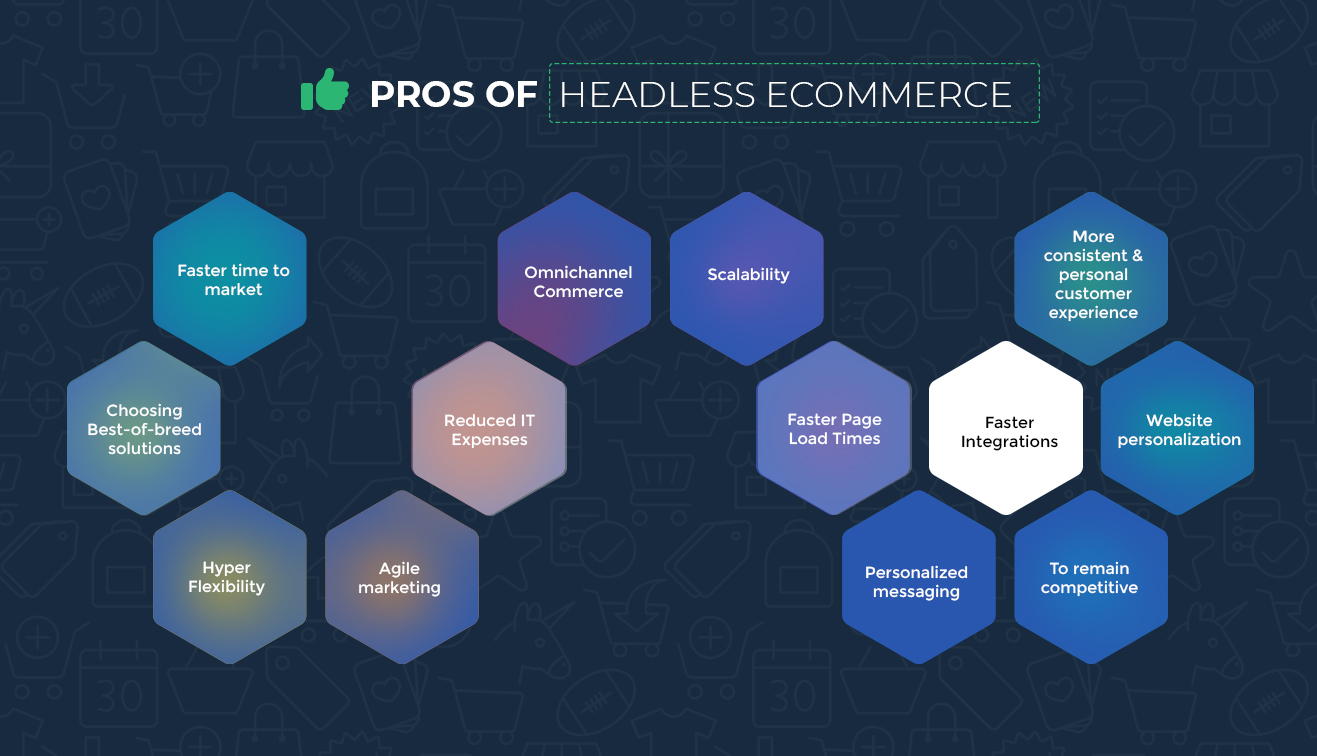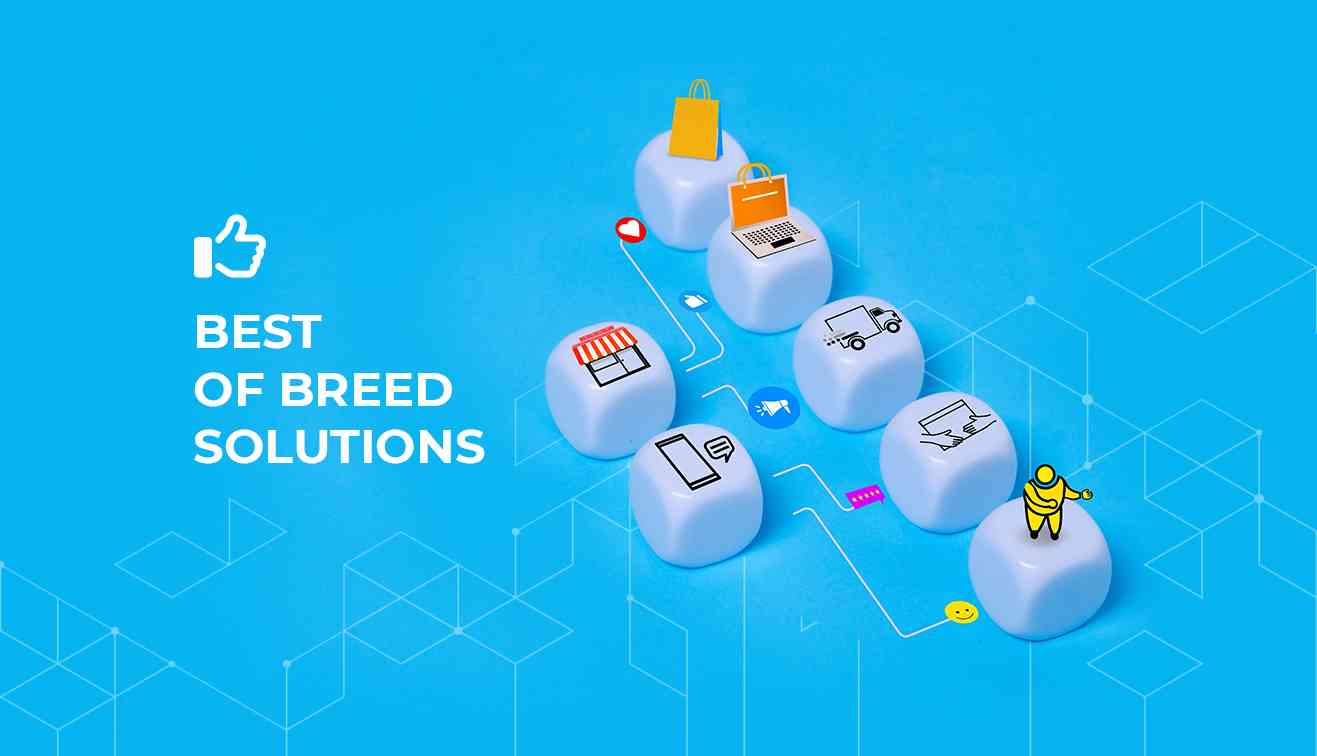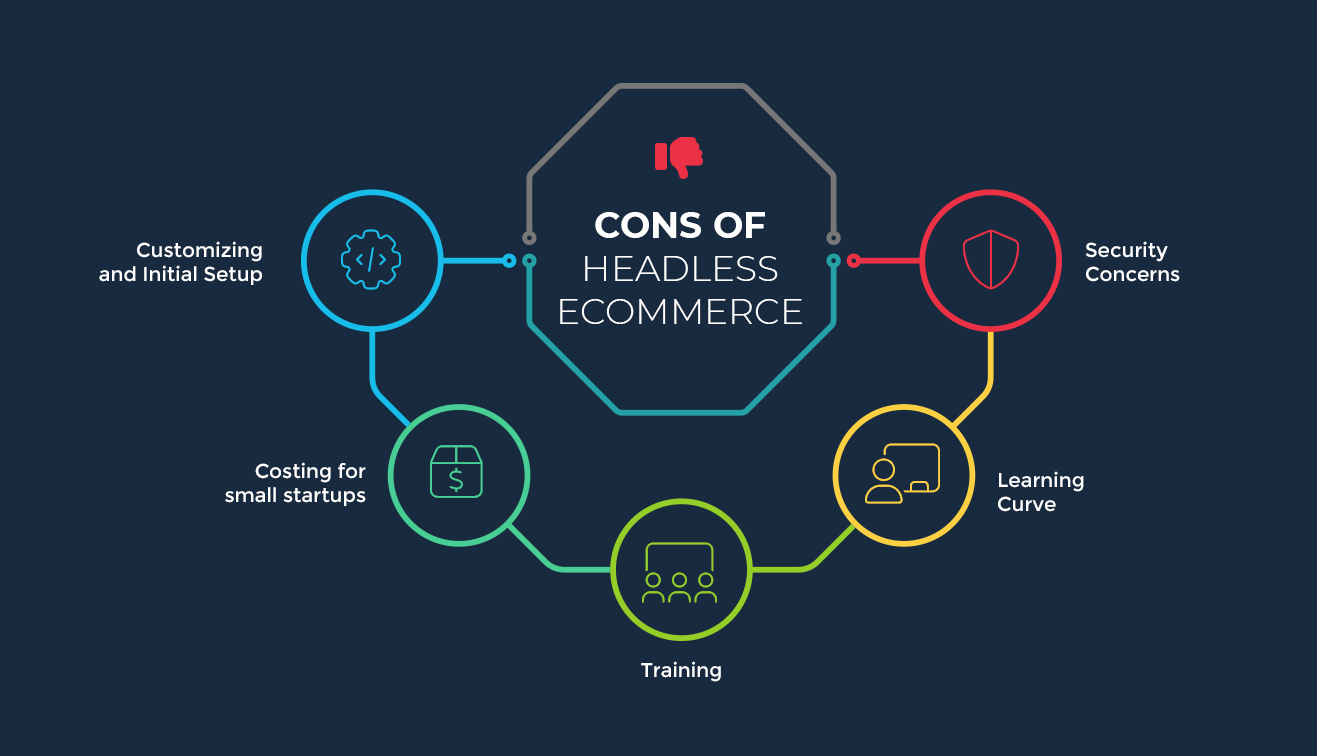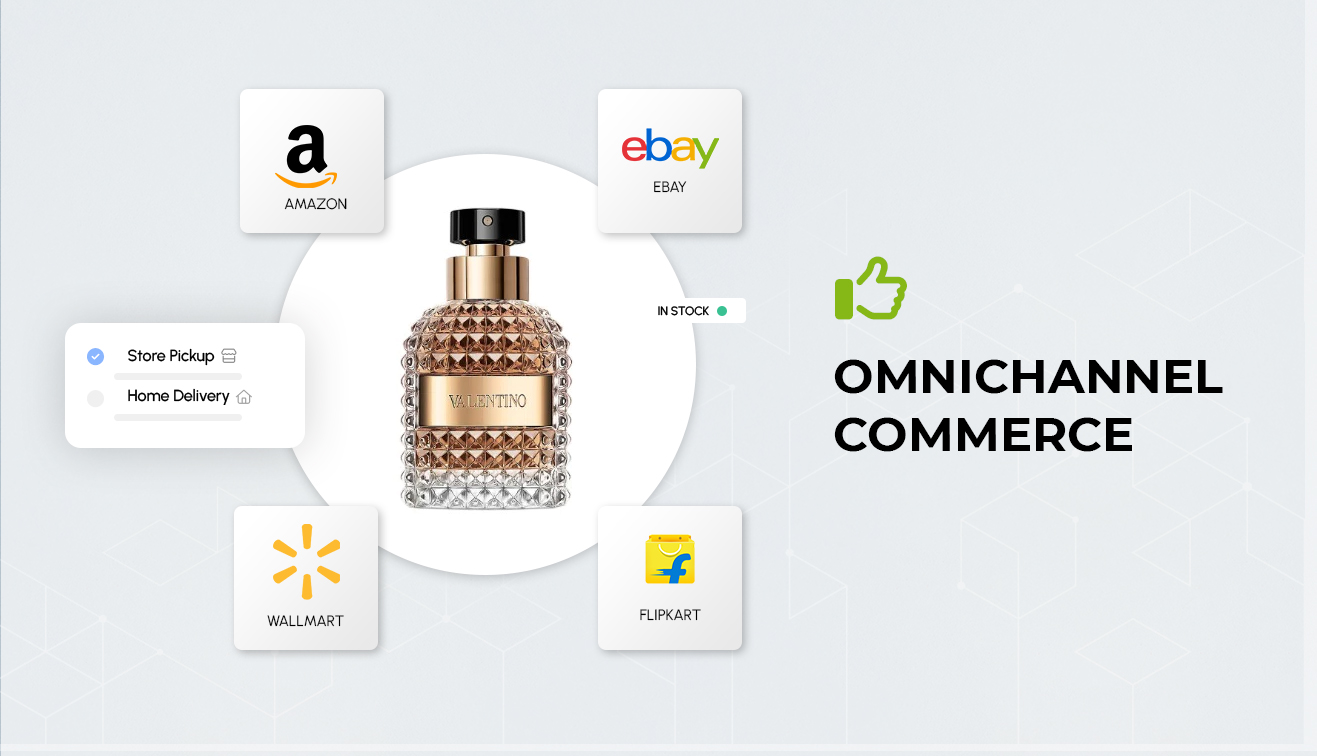The world of headless eCommerce is a diverse one! Making a decision on selecting a headless eCommerce platform is not just deciding for your online store but for your business as a whole.
Today, businesses are constantly seeking ways to deliver seamless, engaging, and personalized online shopping experiences. One approach that has gained significant attention in recent years is headless ecommerce.
There are many associated pros and cons, and every small factor can actually affect the future of your business in a big way. With the right platform, you can completely transform the way buyers perceive your business, the message your brand conveys through its digital presence or the way you accept and process orders.
What is Headless eCommerce?
By decoupling the front-end presentation layer from the back-end ecommerce platform, headless architecture offers a level of flexibility and innovation that can be a game-changer for businesses. However, like any technology solution, headless ecommerce also comes with its own set of pros and cons.
Headless ecommerce is an approach that separates the front-end presentation layer (the customer-facing website or app) from the back-end ecommerce platform. This decoupling allows for greater flexibility, enabling businesses to design and deliver unique and customized user experiences while still leveraging the power of a robust ecommerce system to handle product management, transactions, and order processing. In essence, headless ecommerce uncouples the "head" (front end) from the "body" (back end) of an online store, offering the freedom to innovate and adapt rapidly in the ever-evolving world of online retail.
Without any further ado, let’s jump straight into the pros and cons of headless eCommerce:
PROS of headless eCommerce

- Faster time to market – If you successfully built an omnichannel or a multi-channel retail experience using a traditional eCommerce platform, your scaling can be complex, thanks to the slow time to market. On the other hand, a headless eCommerce solution helps businesses focus on front-end experiences on touchpoints and various devices. The products and content are delivered via API and housed centrally. This further facilitates quicker time to market while entering new regions and adopting new channels.
- Choosing Best-of-breed solutions

Headless e-commerce offers businesses the freedom to select the best-of-breed solutions for their specific needs. Unlike traditional e-commerce platforms that bundle front-end and back-end functionalities, headless architecture allows companies to pick and integrate specialized tools and services that excel in areas such as content management, payment processing, analytics, and more.
This flexibility empowers businesses to tailor their e-commerce stack to optimize performance, user experience, and overall efficiency, resulting in a more agile and competitive online presence.
- Hyper Flexibility - Headless architecture gives you the freedom to create unique, customized front-end experiences. You're not tied to the templates and restrictions of a traditional ecommerce platform. This flexibility enables you to design and deliver an exceptional user experience tailored to your brand and customer base.
- Agile marketing – A headless eCommerce platform can support new technology whenever required. To be able to support new technology is ideal while designing new user experiences. This will enable your marketing team to promote your brand in the best ways possible on various sites across different portfolios, brands, and divisions. Therefore, the flexibility offered by the headless eCommerce solutions gives a push to the marketing teams to manage your business better.
- Reduced IT Expenses - Headless ecommerce can lead to lower IT costs. Development teams have the flexibility to work independently, allowing for concurrent testing, development, and bug-fixing without dependencies on other teams' progress, ultimately improving efficiency and cost-effectiveness.
- Omnichannel Commerce
A headless eCommerce platform will aid in driving your content everywhere. Meaning, it will deliver your eCommerce products, blog posts, product videos, etc., to any channel that has or will emerge. Hence, be ready to sell through digital signage, Alexa, progressive web apps, etc. The best part with a headless eCommerce platform is that it is a future-proof package. There is no requirement to restructure your web platform to publish across different desired channels.
Headless architecture empowers you to seamlessly integrate with various sales channels and touchpoints. Whether it's web, mobile apps, voice commerce, or IoT devices, headless makes it easier to deliver a consistent brand experience across all channels.
- Scalability - Headless ecommerce systems are highly scalable. As your business grows, you can add new front-end applications or channels without disrupting your existing infrastructure. This scalability supports expansion and innovation.
- Faster Page Load Times - Separating the front end from the back end allows for more efficient content delivery. With headless, you can leverage content delivery networks (CDNs) and optimize your website's performance, resulting in faster page load times. This can significantly improve user satisfaction and boost conversion rates.
- Personalized messaging – Headless eCommerce platforms allow merchants to serve their customers better. They can send product recommendations and personalized content to every registered buyer. This form of targeted communication helps to enhance conversion by posting relevant content for every customer.
- To remain competitive – A headless eCommerce platform allows you to deploy updates without affecting the back end of your store. In addition, you can easily alter the front end to coincide with the speed of the customer technology. Most commerce labels that use a traditional eCommerce solution usually roll out updates in a few weeks. When the front and back ends are not firmly coupled, you do not need updates for the entire system. Only updating a part does the job. Therefore, you can deliver the desirables of the customers in a short period and pretty much remain competitive.
- Website personalization – Website personalization leads to better shopping experiences. Another pro of headless eCommerce platforms is that you can have personalized landing pages for your customers. This personalization will let your buyers purchase from your store without any extra work from your end. All the hard work can be done much in advance based on your customers. Furthermore, you can personalize the experience of your buyers by sending out emails. You can segment your mailing list based on older purchases, money spent, or location. Another recommendation is to retarget buyers who visited your online store or added a product to their cart.
- More consistent and personal customer experience - In a headless eCommerce platform, customers enjoy a more consistent and personalized shopping experience. As customer preferences evolve, the platform's back-end retains knowledge of individual preferences, using this data to inform personalization tools across various channels and devices, including social channels, content management systems (CMS), and mobile apps. This ensures that every customer, regardless of the channel or device they choose, receives a consistent and tailored shopping experience, strengthening brand-customer relationships and meeting evolving customer needs.
- Faster Integrations – Integrations, and updates are time-consuming jobs when speaking from a technical point. They take several weeks to have the job done. When speaking of a headless eCommerce solution, eCommerce integrations are API-driven. Meaning, you get to enjoy quicker integrations. Using a headless approach for your business, software platforms like CRM, CMS, ERPs, etc., are quickly integrated.
Cons of headless eCommerce

- Customizing and Initial setup – The initial setup of Headless eCommerce solutions involves a lot of steps. You would need a lot of customizations and integrations to fulfil all the needs of your business. This can include paying a lot of developers from different backgrounds. However, companies like BetterCommerce offer complete integration and initial setup, so you won’t have to get into the technical side of Headless eCommerce.
- Costing for small startups – If you are starting out your eCommerce journey on a small scale and wish to test out things, headless is probably not for you. There are price points and linked factors that do not make sense for people testing out their ideas. However, it becomes logical as soon as you start to scale.
- Training – This can be a con or pro for you, depending on your current stage and other factors. You will have to train your team so they can easily use every part of the software. Marketing campaigns and other changes on the website must be made by members of your team who are trained for using and making changes on the platform.
- Learning Curve - Adapting to a headless approach may require a learning curve for your team. Understanding the intricacies of decoupled architecture and its potential complexities might take time.
- Security Concerns - Headless systems, especially if not properly configured and secured, can introduce security vulnerabilities. It's crucial to invest in security measures and stay vigilant to protect customer data and your ecommerce operations.
Is Headless Ecommerce Right for You?
Headless ecommerce offers unparalleled flexibility and innovation potential, making it an attractive choice for businesses aiming to create unique and engaging shopping experiences. However, it's not a one-size-fits-all solution.
The decision to go headless should be based on your business goals, budget, technical capabilities, and readiness for the associated challenges. Carefully weigh the pros and cons of headless ecommerce to determine whether headless ecommerce aligns with your ecommerce strategy and long-term vision. If executed effectively, headless can empower your business to thrive in the dynamic world of online commerce.






.png)




.png?h=250&fm=webp)
.png?h=250&fm=webp)
.png?h=250&fm=webp)



.png?h=250&fm=webp)
.png?h=250&fm=webp)
.png?h=250&fm=webp)


.png?h=250&fm=webp)



.png?h=250&fm=webp)
















.png?h=250&fm=webp)

.png?h=250&fm=webp)
.png?h=250&fm=webp)



































































































































.png?h=250&fm=webp)


.jpg?h=250&fm=webp)





 copy.png?h=250&fm=webp)























_ Why do you need one.png?h=250&fm=webp)


























































.jpg?h=250&fm=webp)

.png?h=250&fm=webp)



.png?h=250&fm=webp)

.jpg?h=250&fm=webp)




.png?h=250&fm=webp)









.jpg?h=250&fm=webp)
